As the Forbidden City marks two major anniversaries, images by China Daily photographer Jiang Dong capture its grandeur
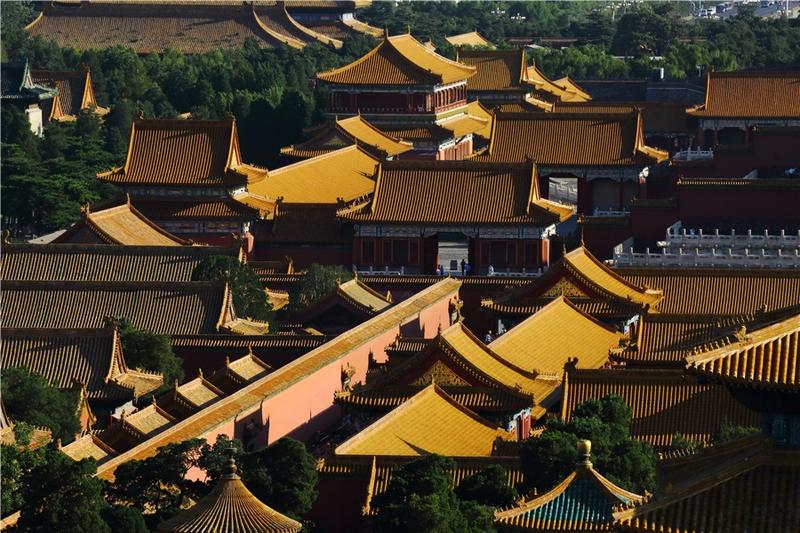 The glazed tile roofs of buildings in the Palace Museum glisten in the sun on Sept 9, 2020. (JIANG DONG / CHINA DAILY)
The glazed tile roofs of buildings in the Palace Museum glisten in the sun on Sept 9, 2020. (JIANG DONG / CHINA DAILY)
The Forbidden City, known today as the Palace Museum, is celebrating the 600th anniversary of the completion of the compound's construction. This year also marks the 95th anniversary of the establishment of the museum, the largest in China and home to more than 1.8 million cultural treasures.
Measuring 961 meters from south to north and 753 meters from east to west, and protected by 10-meter walls and a moat, the complex covers an area of over 720,000 square meters.
It served as the imperial palace during the Ming (1368-1644) and Qing (1644-1368) dynasties. In 1406, Zhu Di, the third emperor of the Ming Dynasty, decided to move the empire's capital from Nanjing, today the capital of Jiangsu province, to Beijing. It took more than 10 years to prepare timber for the construction.
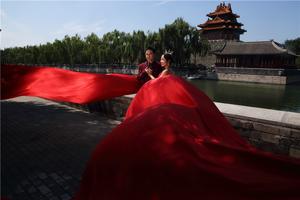 A couple pose for a wedding photo beside the Forbidden City's moat on Sept 2, 2020. Officially known as the Palace Museum, the complex is a popular place for wedding photos. (JIANG DONG / CHINA DAILY)
A couple pose for a wedding photo beside the Forbidden City's moat on Sept 2, 2020. Officially known as the Palace Museum, the complex is a popular place for wedding photos. (JIANG DONG / CHINA DAILY)
Since its completion in 1420, some structures in the compound have been repeatedly rebuilt after being damaged or destroyed by lightning strikes and fires. As the center of the Chinese empire, the Forbidden City was home to 24 emperors.
In 1925, it opened its doors to visitors and became known as the Palace Museum. Fortunately it remained mostly intact during the War of Resistance Against Japanese Aggression (1931-45) and the civil war.
In May 1949, a renovation project was launched and the compound gradually regained its former glory.
In December 1987, it was designated as a UNESCO world heritage site and has since become one of the country's leading cultural attractions, attracting millions of visitors every year.
Contact the writers at jiangdong@chinadaily.com.cn
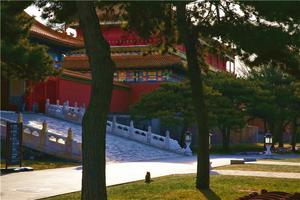 A cat basks in sunshine in the complex on Jan 6, 2018. (JIANG DONG / CHINA DAILY)
A cat basks in sunshine in the complex on Jan 6, 2018. (JIANG DONG / CHINA DAILY)
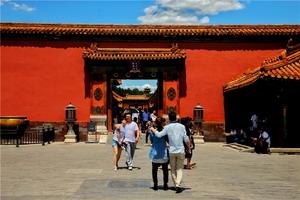 Visitors walk around the complex and view the imperial architecture on June 11, 2016.(JIANG DONG / CHINA DAILY)
Visitors walk around the complex and view the imperial architecture on June 11, 2016.(JIANG DONG / CHINA DAILY)
 Workers clean a wooden chair in the Hall of Mental Cultivation (Yangxin Dian) on June 11, 2016. (JIANG DONG / CHINA DAILY)
Workers clean a wooden chair in the Hall of Mental Cultivation (Yangxin Dian) on June 11, 2016. (JIANG DONG / CHINA DAILY)
 Visitors view treasures on display at an exhibition in the Palace Museum on Oct 1, 2020. (JIANG DONG / CHINA DAILY)
Visitors view treasures on display at an exhibition in the Palace Museum on Oct 1, 2020. (JIANG DONG / CHINA DAILY)
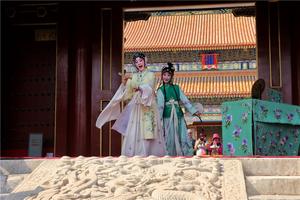 Artists stage a Kunqu Opera performance in front of the Palace of Compassion and Tranquility (Cining Gong) on May 18, 2016. (JIANG DONG / CHINA DAILY)
Artists stage a Kunqu Opera performance in front of the Palace of Compassion and Tranquility (Cining Gong) on May 18, 2016. (JIANG DONG / CHINA DAILY)
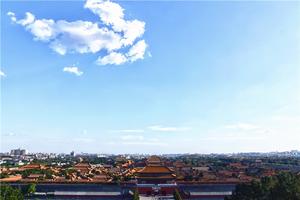 A panoramic view of the Palace Museum from the top of Jingshan Hill in Beijing on Sept 9, 2020. (JIANG DONG / CHINA DAILY)
A panoramic view of the Palace Museum from the top of Jingshan Hill in Beijing on Sept 9, 2020. (JIANG DONG / CHINA DAILY)
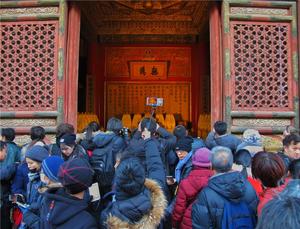 Tourists view a plaque handwritten by Emperor Qianlong (1711-99) in the Hall of Union and Peace (Jiaotai Dian) on Dec 20, 2017. (JIANG DONG / CHINA DAILY)
Tourists view a plaque handwritten by Emperor Qianlong (1711-99) in the Hall of Union and Peace (Jiaotai Dian) on Dec 20, 2017. (JIANG DONG / CHINA DAILY)
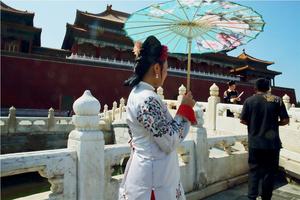 A woman in Qing-style attire walks around the museum on Sept 2, 2020. (JIANG DONG / CHINA DAILY)
A woman in Qing-style attire walks around the museum on Sept 2, 2020. (JIANG DONG / CHINA DAILY)
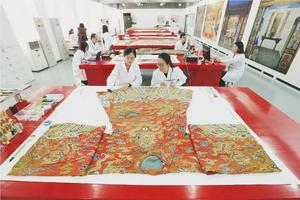 Restorers repair antiques at a workshop in the museum on Nov 30, 2017. (JIANG DONG / CHINA DAILY)
Restorers repair antiques at a workshop in the museum on Nov 30, 2017. (JIANG DONG / CHINA DAILY)
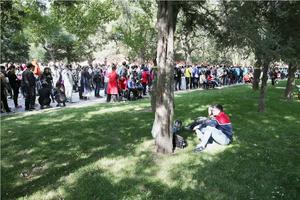 Tourists line up to wait their turn to visit an exhibition in the museum on Oct 11, 2015. (JIANG DONG / CHINA DAILY)
Tourists line up to wait their turn to visit an exhibition in the museum on Oct 11, 2015. (JIANG DONG / CHINA DAILY)
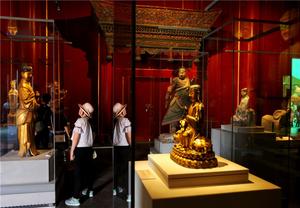 People view treasures on display in the Palace of Compassion and Tranquility on May 18, 2016. (JIANG DONG / CHINA DAILY)
People view treasures on display in the Palace of Compassion and Tranquility on May 18, 2016. (JIANG DONG / CHINA DAILY)
 Visitors in front of the Gate of Supreme Harmony (Taihe Men) on Aug 12, 2020. (JIANG DONG / CHINA DAILY)
Visitors in front of the Gate of Supreme Harmony (Taihe Men) on Aug 12, 2020. (JIANG DONG / CHINA DAILY)


